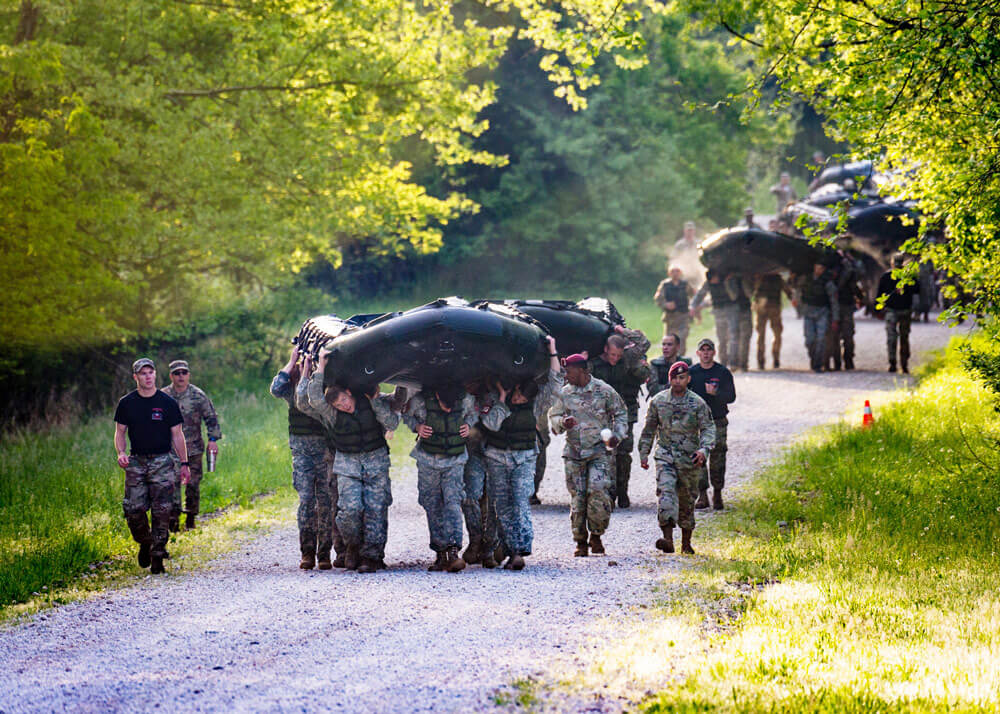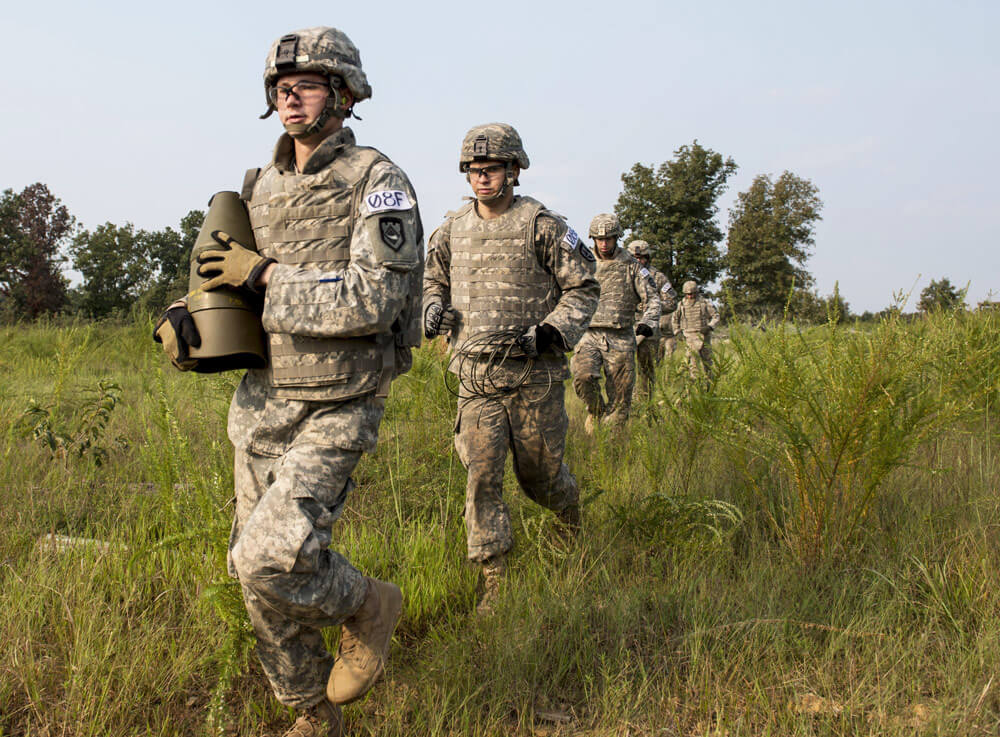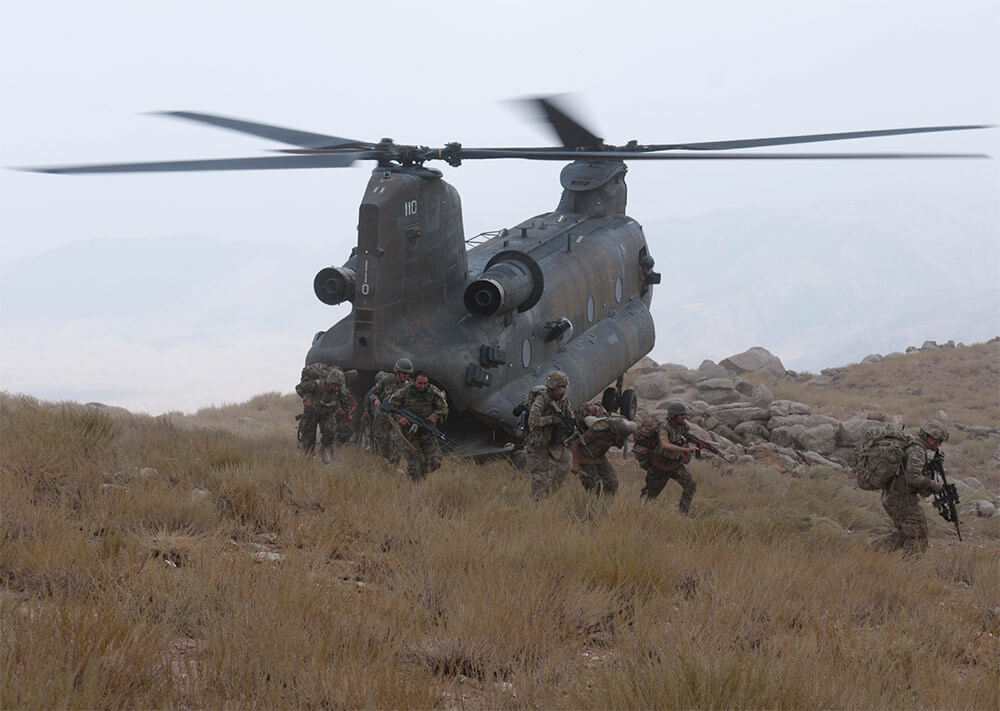Best Sapper Competition Tests Fortitude of Army Engineers
“We were getting to that castle. It didn’t matter. We weren’t going to quit.”
That was the determined statement made by a gritty first lieutenant, one member of a tenacious Virginia Army National Guard team who competed in the grueling, go-for-broke competition known as the Best Sapper contest. The Soldiers, 1LT Gregory Gerlach and SGT Nicholas Shidlovsky, triumphed as finalists in 2017, but not before their skills and endurance were put to the test.

The castle 1LT Gerlach referred to is a mock castle painted red and used as the finish line on the competition grounds of Fort Leonard Wood, Missouri. It is an iconic symbol for Sapper. Passing through its gates is reserved for those few who prove themselves ready to take on any combat engineering challenge.
In its twelfth year, the Best Sapper Competition is the Army’s premier engineer contest hosted annually by the Engineer Regiment at Fort Leonard Wood. The three-day event – consisting of 50 two-man teams, over 50 miles and 50 hours – serves to test competitors, showcase engineer capabilities and educate maneuver commanders on the engineer assets that exist within their formation and the Engineer Regiment.
To compete, Soldiers must rank in the grades of E4 and above, and both team members must be graduates of the Sapper Leader Course.
Last year’s Best Sapper included 35 events that spanned a variety of mobility, counter mobility and survival tasks conducted in technically challenging lanes. Challenges included a ruck march, technical exam, team-building exercises, strength and endurance events, technical events, land navigation and an X-mile run.
“The competition is very reflective of the different roles of the engineers. We had everything from mine laying to explosives. We did some squad events. One of the more memorable experiences of the Sapper Leader Course is definitely the boat operation – zodiac boats,” recalled 1LT Gerlach.

On day one of the 2017 competition, teams carried 350-pound Zodiac boats more than a mile to the lake on Fort Leonard Wood’s training complex before paddling across the lake.
“Basically, if you look into Sapper School – you take that 28-day course and condense it into three days; that’s essentially what the competition was,” explained SGT Shidlovsky.
The Sapper Engineering Company at Fort Leonard Wood is the group primarily responsible for the planning and execution of the competition. The company’s leadership develops the event plans, looks at what has been done in the past and works to create a competition that is, each time, more challenging than the previous year.
The Sapper Engineering Company is structured of 50 Soldiers. Yet, facilitating all three days of the Best Sapper Competition requires the participation of over 200 personnel. Support is pulled in from several outside resources to fully man the event.
“It can be very long and tedious — requesting all the plans, developing the resources, [defining] how we’re going to grade and then completing the final review,” said CPT Donald Lew, the active duty commander of Fort Leonard Wood’s Sapper Engineering Company. “We go through rehearsals in order to ensure that we have a smooth competition.”

1LT Gerlach said he and SGT Shidlovsky decided to compete in Best Sapper because they wanted to demonstrate the quality of the Sappers in their company and test themselves against the best.
To get in the best shape possible, the Soldiers prepared for two months prior to the competition. “In the morning, we’d do some sort of physical activity. After that, we would focus on a particular subject for the week,” 1LT Gerlach said. “For example, one week might be demo calculation. The next week might be poncho-raft and water operation. Then we would finish with another physical activity in the evening.”
1SG Timothy Jacobs, chief of operations at the Sapper Leader Course, described Army engineers as being like the “Swiss Army Knife” of the Service. Combat engineers can find themselves doing everything from mine sweeping to bridge demolition.
“[No matter what,] we’re going to make it happen. That is the great thing about being a Sapper. There’s just an array of things that we get to do that not everybody gets a chance to do,” 1SG Jacobs added.

1LT Gerlach and SGT Shidlovsky relished their momentous three-day adventure. The duo from the 229th was one of the few teams that completed the contest successfully. The teammates encouraged each other to keep going as other teams dropped out. SGT Shidlovsky expressed how it felt to see other teams fall out while he and his partner pressed forward.
“We did see a lot of other teams get to that point,” he said. “They voluntarily withdrew. That’s disheartening to see, but at the same time it’s motivating. We’re going through the same events as they are and we’re obviously feeling better about it than they are.”
It wasn’t easy though. Part of partnered competitions is learning one another’s strengths and weaknesses. Soldiers must accentuate the strengths of their partner while compensating for areas where they may be more challenged. It’s a team effort to get to the end, and getting to the end is about being the most able team, not the most skilled individual Soldiers.
“You’re not going to be 100 percent the whole three days,” SGT Shidlovsky emphasized. “You’re going to have points where you’re going to get frustrated and exhausted, and you’re going to have to have your buddy to lean on to help keep you going and vice versa.”
Being a combat engineer exposes a Soldier to many unique challenges. Sappers are jacks-of-all-trades and masters of ingenuity. The Best Sapper Competition is a great way for combat engineers to test their mettle.
As SGT Shidlovsky put it, “We’ve been through sleep deprivation. We’ve been through long walks. There’s no reprieve between events. You keep on going to the next, to the next, to the next.”
Do you have what it takes?
The Best Sapper Competition is looking for more Army National Guard combat engineers to take on the challenge in 2019.
For information on competing in Best Sapper contact the Sapper Training Company by phone at 573-596-0823 or by email at USArmy.LeonardWood.Engineer-SCHL.mbx.Best-Sapper@mail.mil.
By STAFF WRITER Matthew Liptak


